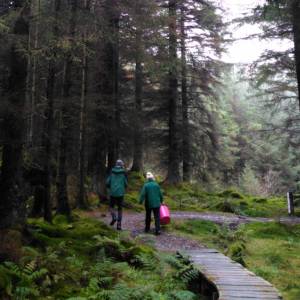Milk, for all it's worth
Anyone that was brought up in the era of ‘Skippy, the Bush Kangaroo,’ (and can sing the song) can be confident in knowing pretty much all there is to know about these marsupials. What a blow finding this is not the case!
For some positive therapy after yesterday Rachel and I decided to return Jenny’s sack and visit her Kangaroo wildlife rescue facility. Jenny is a fantastic lady who has turned her house and part of her land holding into a macropod orphanage. (Macropod = bigfoot) Her dining room houses new inmates - two young Eastern Grey Kangaroos and 3 Agile Wallabys, at the moment, each with a joey pouch which they somersault into at the drop of a hat.
The kitchen has a huge fridge for medicines and milk and a waist level bath. The sitting room has the smallest joeys with extra-insulated pouches.
Outside are fenced paddocks with older individuals and lying under a tree in the distance, some adult kangaroos lounge away the morning.
There are about 49 species of kangaroos and wallabies – the only difference between the two being size. (a number of these are in danger of extinction through habitat loss, and further 6-7 species are already extinct) Jenny mainly deals with ones local to the area:- Eastern Grey Kangaroos, Red Kangaroos (the biggest) and Agile Wallabies. Rock Wallabies bounce across people’s heads like india-rubber, so she tries to avoid these. Wallaroos are not the cross bred equivalent of cockerpoos or labradoodles but a species in their own right – and very furry.
Ellie, the Grey still hasn’t got the hang of bottlefeeding and has to be scooped up in a blanket onto Jenny’s lap, and a blindfold put over her dusky Joan Collins eyelashes so she can concentrate on sucking.
We know of course that joeys are born when they are only about 1.5cm long and have a hairy time of it clambering up their Mum’s tummy and into the pouch, with no help. There they latch onto a teat, small with bulge on the end for grip, and start their development. Mum has four teats and whilst tiny joey is latched on to one teat her older joey ‘at foot’ takes regular drinks exclusively from the teat it was earlier latched into. Now, here’s something that ‘Skippy’ didn’t come up with; each teat provides a different consistency of milk! So, where baby has a diet of rather fat free fluid the older gets much more for growth and energy. This makes hand-rearing quite a complicated task and time consuming too, as the batch of youngest ones need feeding every 3 hours.
Jenny does an amazing job but not without set-backs. The current drought means that in the wild 99% of the joeys will probably not survive. Many weaker adults will die too. This has not stopped some state governments, in the past few weeks, from giving permission to landowners to shoot macropods, as many and any species they like, to safeguard their own water supplies, grazing and stock.
- 0
- 0
- Olympus VG160,X990,D745
- 1/30
- f/2.8
- 5mm
- 125

Comments
Sign in or get an account to comment.


